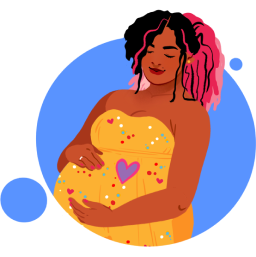
To celebrate LGBTQ Pride Month, we’re taking a look at important moments in gay, lesbian, bisexual, trangender, and queer pride history.
Society for Human Rights

In 1924, Henry Gerber founded the Society for Human Rights in Chicago. Gerber was a World War I veteran who was looking to create a group that would defend gay rights. His society was the first such group in America. It also published the first piece of literature in support of gay rights, which was a newsletter called Friendship and Freedom.
Daughters of Bilitis

In 1955, Daughters of Bilitis was founded in San Francisco. It was the first recorded lesbian rights organization in the US. The group focused on supporting both civil and political rights for lesbians.
One, Inc. v. Olesen

In 1958, the Supreme Court ruled in favor of gay rights for the first time. The US Post Office was refusing to deliver a pro-LGBT publication called ONE: The Homosexual Magazine. The case made it all the way to the Supreme Court, and the ruling came down in favor of LGBTQ rights. This was the first ruling to focus on both homosexuality and the right to free speech in regards to homosexuality.
Illinois takes a stand

In 1961, Illinois became the first state to decriminalize homosexuality. Illinois repealed its sodomy laws, making it legal for two consenting same-sex adults to engage in sexual acts.
The Stonewall riots

In June 1969, at the Stonewall Inn, a gay bar in New York City, police staged a raid. Patrons at the bar started to fight back against the police, leading to a series of riots that lasted for days. The Stonewall riots sparked the beginning of the modern movement for LGBTQ rights and inspired the June date for Pride Month.
Christopher Street Liberation Day

In 1970, people in New York City marched through the streets in honor of the one-year anniversary of the Stonewall riots. It is now known as Christopher Street Liberation Day and has been hailed as the first Gay Pride parade. Since 1970, the Pride parades have only gotten bigger and better. They are a main source of celebration for members of the LGBTQ community.
The American Psychiatric Association's breakthrough decision

In 1973, the American Psychiatric Association’s board of directors removed homosexuality from its official list of mental illnesses. This was after years of studies and analysis. The removal from the list was endorsed by a vote from the association’s membership.
Women in power

In 1974, two separate women were elected to public office, both making history with their wins. Kathy Kozachenko became the first openly LGBTQ American elected to a public office when she was elected to a seat on the Ann Arbor City Council in Michigan. Elaine Noble then became the first openly gay candidate elected to a state office as a representative in Massachusetts.
Pictured: Elaine Noble at a gay rights rally in Boston
The rainbow flag

In 1978, Gilbert Baker created the rainbow flag. After Harvey Milk, an openly gay public official, was elected to the San Francisco Board of Supervisors, he instructed Baker to create a Pride symbol. Baker dyed and stitched together a flag with the following colors:
- Red for life
- Orange for healing
- Yellow for the sun
- Green for nature
- Turquoise for magic
- Blue for peace
- Purple for spirit
- Hot pink for sexuality
Vermont's ruling

In 2000, Vermont became the first state in the US to grant same-sex couples the right to enter into civil unions. The groundbreaking ruling opened the door to allow those couples the same rights and benefits as legal marriages.
'Don't Ask, Don't Tell'

In 2011, President Barack Obama officially revoked the “Don’t Ask, Don’t Tell” policy. This discriminatory law had prevented openly gay members of the public from enlisting in US military service.
Obama's State of the Union

In 2015, President Obama used the words “lesbian,” “bisexual,” and “transgender” for the first time in his State of the Union address. He condemned their persecution and advocated for their rights as American citizens. Reviewers of the State of the Union hailed Obama for his inclusion, stating that it was a stepping stone to bigger LGBTQ discussions nationwide.
Sexual orientation in the military

In 2015, sexual orientation was added to America’s military’s anti-discrimination policy. Even though “Don’t Ask, Don’t Tell” had been revoked four years earlier, sexual orientation was still not a protected class. Secretary of Defense Ashton Carter announced that it would be added to the list, which already included race, religion, age, sex, and national origin.
A constitutional right to marry

On June 26, 2015, the Supreme Court officially ruled same-sex marriage a constitutional right across the US. All states must allow Americans to get married, without regard to their sexual or gender orientation. This was a groundbreaking moment in LGBTQ history and one that will be remembered for decades to come.
Stonewall 50 — WorldPride

New York City planned a full month of events in 2019 to honor the 50-year anniversary of the Stonewall riots. That year also marked the first time WorldPride, the annual global LGBTQ Pride event, was held in the US. Because of that milestone and accompanying event, 2019 was the largest international LGBTQ Pride event in history, with 5 million visitors celebrating in New York.




